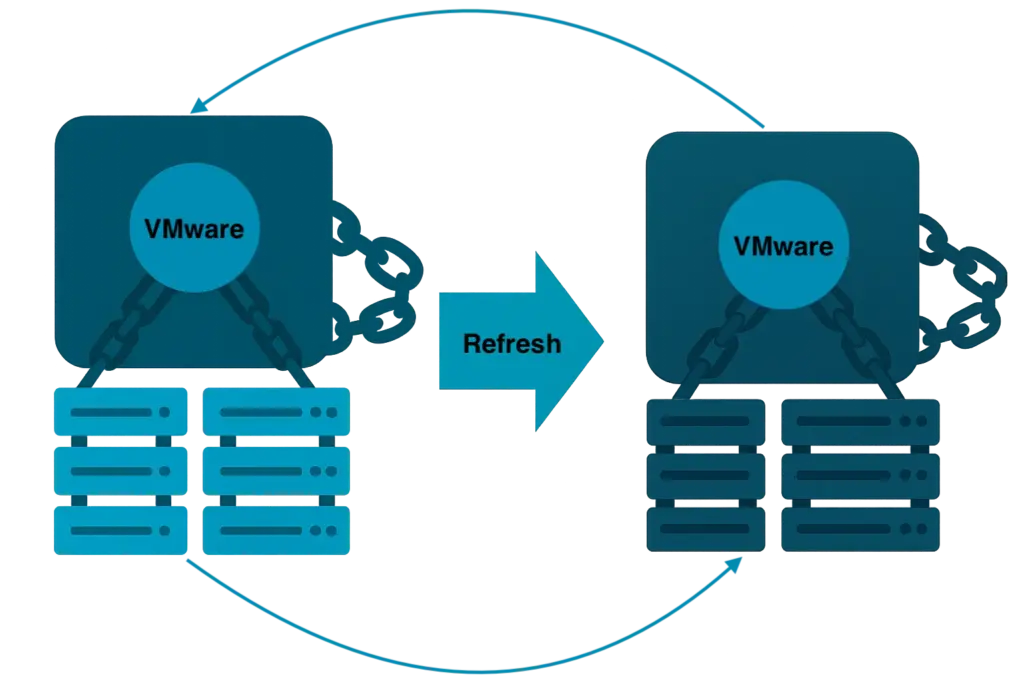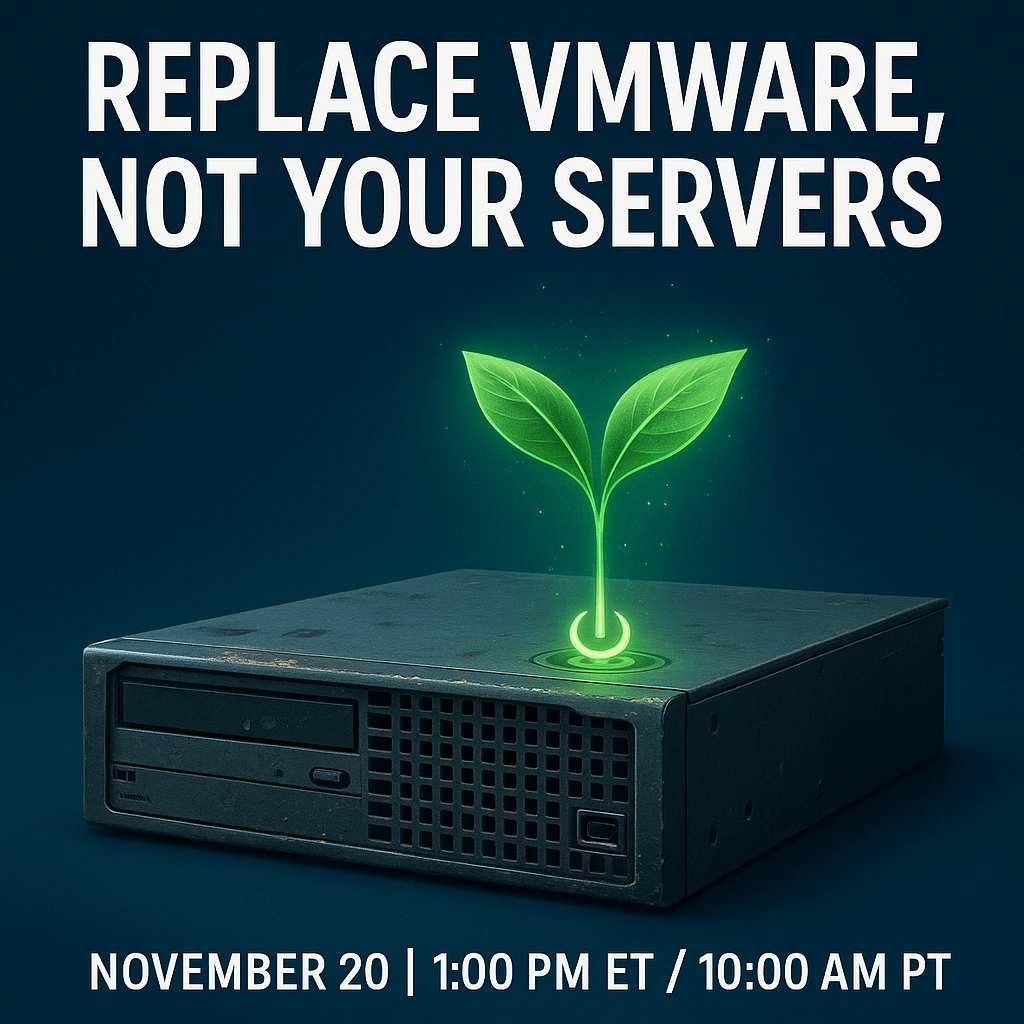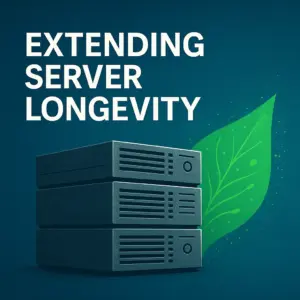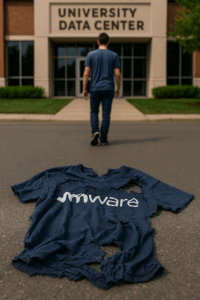If IT adopted the servers-as-cattle model rather than the servers-as-pets model, it would lower data center costs and improve flexibility. The cattle-and-pets metaphor shaped public cloud design for more than a decade. It pushed the idea that servers should behave like cattle. They should stay in service, run until their productive life ends, and leave the “herd” only when they fail. The cloud provider’s proprietary infrastructure software drives this philosophy.

The hypervisor-first approach to most infrastructure software does not align with the cattle-and-pets metaphor. Its dependence on commonality and rigid hardware compatibility lists forces IT to follow a four-year refresh cycle that ties them to a single vendor. This cycle replaces servers that still have years of usable life, creating rigid fleets that align more with vendor interests than with operational needs.
A better path is the servers-as-cattle model. The right infrastructure operating system that understands that infrastructure is more than a hypervisor can keep servers in production as long as they continue to deliver reliable performance. The same philosophy should be applied to storage and networking hardware. This philosophy creates a mixed estate where equipment ages at different rates. Growth becomes a process of steady hardware addition rather than a forced turnover of entire racks.
New servers will join the environment, but an infrastructure operating system provides choice when they do. IT planners can select any supplier that aligns with the data center’s current goals. Freedom protects budgets and avoids uniformity driven by vendor lists. VergeOS supports this approach by running mixed servers without the compatibility limits that shaped past refresh cycles.
The VergeOS Model
VergeOS delivers the servers-as-cattle model to on-premises data centers. It allows servers from different generations and suppliers to run together in the same instance, all managed through a standard interface, regardless of the underlying hardware. Each server contributes its resources to a global pool, and the platform balances workloads across the pool without relying on uniform specifications. VergeOS significantly extends the life of server hardware while still supporting the addition of new servers as workloads demand them.
VergeOS integrates virtualization (VergeHV), storage (VergeFS), networking (VergeFabric), and AI (VergeIQ) into a single code base, eliminating the legacy IT stack. All of these elements adjust to mixed hardware the same way compute does. They rely on the platform’s capabilities rather than the attributes of individual devices. The data center gains the freedom to adopt new technologies, move away from old ones, or mix both without constraints imposed by rigid compatibility lists. The result is an infrastructure operating system that supports the cattle model more naturally than any legacy stack and more cost-effectively than the cloud.
VergeIQ extends this philosophy into AI. VergeOS ’26 introduces integrated inferencing running on the platform, eliminating the need for external services. Sensitive data stays within the instance and is processed through a simple workflow. This lowers cost and supports rapid adoption across distributed environments. The capability becomes part of the infrastructure rather than a bolt-on project that adds new vendors or new licensing layers.
Servers-as-Cattle, Data-as-Pets

The servers-as-cattle model fits physical servers because hardware delivers value for many years. A server that continues to run stable workloads should remain in service until it reaches the end of its usable life. Treating servers this way reduces waste and builds a larger resource pool that grows through steady additions rather than rigid refresh cycles. IT gains more control over budgets and avoids unnecessary hardware turnover.
Data requires a data-as-pets approach. Data carries long-term value and cannot be tied to the condition or age of any single server. The data center protects digital assets the same way a pet receives care. It remains guarded, resilient, and available even when hardware changes. This places higher demands on the infrastructure operating system because it must maintain integrity across failures and across locations.
VergeOS supports this model via:
- VergeFS, which maintains data consistency across all participating servers. Inline deduplication reduces storage requirements and improves read behavior.
- High availability and near-continuous point-in-time protection keep data safe during routine failures.
- ioGuardian protects against multiple simultaneous hardware losses inside the instance and maintains forward progress during repairs.
- ioReplicate and Virtual Data Centers extend protection across sites and support recovery during a complete data center outage. These features remove complexity and give teams a direct path back to operation after any level of disruption.
Why This Matters Now
The servers-as-cattle model is vital because budget constraints are pushing teams to keep hardware in service longer, and many servers still deliver steady performance well past their planned refresh dates. This creates a gap between vendor timelines and the actual durability of modern equipment. A platform that accepts mixed hardware closes that gap and gives organizations control over how long each system remains productive.
The shift away from VMware intensifies the need for that flexibility. Teams want to keep their current servers and add new ones from any vendor without narrow compatibility lists. They need a platform that adapts to their environment rather than forcing hardware turnover.
Distributed locations make this even more important. Remote sites often run a mix of equipment that spans several years of procurement. VergeOS fits this pattern by using every available server inside the instance and protecting data across all locations.
Servers-As-Cattle Support Cloud Repatriation
Moving to the servers-as-cattle model, as part of a VMware alternative, also supports cloud repatriation post-exit. The same flexibility that accepts mixed on-prem hardware also accepts workloads returning from the cloud. VergeOS runs those workloads on existing servers without requiring new procurement or rigid compatibility lists. This lowers the cost of repatriation and removes barriers that kept workloads locked in cloud environments. The result is a single platform that handles both the VMware exit and the cloud return, giving IT full control over where workloads run and what hardware supports them.
Conclusion
The servers-as-cattle model works only when the platform supports the full range of hardware found in real data centers. Servers stay productive longer, and new systems enter the environment without forcing older ones out. This lowers cost and breaks dependence on fixed refresh cycles.
Data needs stronger protection than any server. VergeOS delivers that protection by separating data resilience from hardware age and by supporting recovery across sites. The result is an environment that grows at its own pace and remains stable even as hardware mixes and changes.



